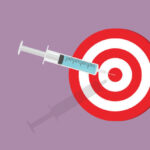Telehealth for stroke enhances how we approach diagnosis and post-acute care. When someone suffers a stroke, timing is everything. The sooner a patient is treated, the better their chances of preventing permanent disability or worse.
Unfortunately, many stroke patients, especially in rural or underserved areas, face challenges in accessing prompt specialized stroke care due to geographic barriers. This is where telehealth is making a significant impact by bringing stroke expertise directly to the patient through real-time virtual technology.
What is Telehealth for Stroke in Post-Acute Care?
Telehealth for stroke involves using secure videoconferencing and data-sharing platforms to connect stroke patients with remote stroke specialists. This allows neurologists and other stroke experts to evaluate the patient’s condition and provide real-time guidance to the local medical team on the most appropriate course of treatment.
When a potential stroke patient arrives at a hospital or emergency department, the local healthcare providers can initiate a telestroke consultation.
A remote specialist can then:
- Conduct a neurological examination virtually by observing the patient and communicating through the video link.
- Review the patient’s medical history, vital signs, and brain imaging scans (CT or MRI) shared electronically.
- Determine the type of stroke (ischemic or hemorrhagic) and its severity.
- Recommend appropriate treatment options.
Telehealth Stroke Care Research
Recent research demonstrates the effectiveness of telehealth for stroke diagnosis and care. A Columbia University randomized controlled trial examined the feasibility of their Telehealth After Stroke Care (TASC) program for aiding in blood pressure control post-discharge. The TASC model integrated telehealth components, including nurse-supported remote blood pressure monitoring, tailored education materials, and video visits with the care team.
Compared to usual care, the TASC intervention led to significantly better blood pressure reductions at 3 months (-16 mmHg vs +3 mmHg). Furthermore, TASC demonstrated significant improvements in blood pressure control among Black and Hispanic stroke survivors, populations that often face disparities. Among Black patients, the rate of controlled blood pressure increased from 40% at baseline to 100% at 3 months with TASC versus only 14% to 29% with usual care.
This research provides compelling evidence that telehealth solutions like remote patient monitoring and virtual visits can enhance secondary stroke prevention, especially for underserved communities. Beyond blood pressure management, telestroke has been shown to increase the timely delivery of clot-busting medications like tPA for ischemic strokes. A systematic review found that telestroke consultations reduced door-to-needle times for tPA administration by an average of 30 minutes compared to conventional care.
With stroke outcomes highly time-dependent, this acceleration of treatment can translate into lives saved and disabilities prevented. Overall, the growing research highlights how telehealth transforms the stroke care landscape by providing equitable access to specialized acute and post-acute stroke expertise regardless of geographic location. As technology advances, telehealth will likely play an increasingly vital role in the stroke care continuum.
Remote Patient Monitoring in Stroke Recovery
High blood pressure is the most controllable risk factor for stroke. Telehealth stroke post-acute care uses remote patient monitoring (RPM). RPM allows physicians to track vital signs and trends in blood pressure readings and observe patients’ responses to medications. With RPM, thresholds can be set so qualified healthcare professionals receive real-time alerts if a patient’s blood pressure reads too high.
A remote blood pressure monitor that is easy to use at home for telehealth stroke recovery is among the best patient options. For example, Tenovi’s BPM blood pressure monitor eliminates complicated setup and is user-friendly. The Tenovi RPM blood pressure monitor is an FDA-cleared, cellular-connected blood pressure monitor. Using a cellular network, it transmits patient vital sign monitoring data through the Tenovi Cellular Gateway.
The patient wraps the cuff around their upper arm, presses one button, and the cuff inflates to take the reading. The device then sends the data to the remote patient monitoring platform.
Understanding Telehealth for Stroke
Embracing remote patient monitoring for telehealth stroke recovery, particularly with TASC, is transformative. The Columbia University research confirms that it significantly enhances patient engagement, access to care, and blood pressure control. Remote patient monitoring and telehealth for stroke survivors are indispensable tools in improving the quality of life and the journey to recovery.
At Tenovi, we’re committed to leveraging cutting-edge technologies that empower healthcare providers and patients. Tenovi provides chronic care, telehealth, and remote patient monitoring software and services companies with FDA-cleared RPM devices and customized integrations for real-time access to their patient’s health and billing data. Contact Tenovi today for a free demo and consultation.






